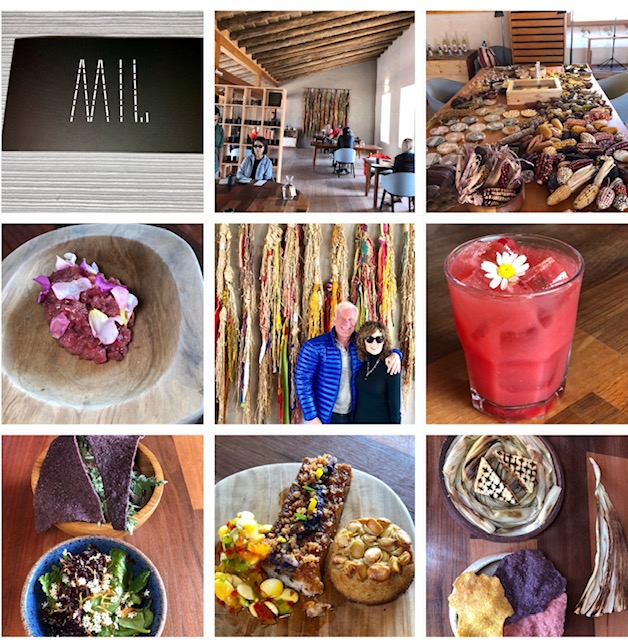
The local diet in Cusco is based on corn, potatoes, rice and indigenous animals for hundreds of years. This is still the case today. However, they have begun to embrace some international influences.
One of the most interesting restaurants I have ever eaten in was in the remote region of Moray, way up a long and arduous dirt road drive through the mountains. It took 90 minutes from the airport in Cusco to arrive there, so you can definitely call this the ultimate destination restaurant. Why was I so eager to try it? It is led by the number one restauranteur in Latin America and 6th best restaurant in the world, Central’s Virgilio Martinez and his wife Malena Martinez. It for sure is a most ambitious project 11,500 feet above sea level, set among the ruins at Moray, where you will see huge stone depressions cut into the earth which acted as an agricultural lab for the Incas for centuries. Now Mil has its own lab, where they experiment with the local crops the community has farmed for them. For example, they source different corns and extract the taste and textures from it. What you eat depends on what they have harvested that day. They make an oven with soil, hot rocks and clay and try to gets different flavours and tastes of the soil. There are over 4,000 varieties of potatoes in these parts, and you will see a huge variety in their lab, of every shape, size and colour. If you haven’t seen the episode on Netflix, of how Chef Martinez and his wife source food, it is a fascinating show on Chef’s Table. This project took ten years in the making, working with the surrounding indigenous communities, researching and developing crops, and is one of the most talked about new dining experiences. Even the water is collected from the snow melt, and the salt from the nearby ancient salt terraces, which is another side trip I highly recommend.
The restaurant has no grand entrance – the building is rustic, with herbs strung across tree lines. There are two dining rooms. I prefer the one with the large picture windows, looking out to the rolling hills. The rooms are simply decorated, with local Berber rugs, local botanicals, and a grass roof. There is a central courtyard between their lab and the small restaurant. It seats about 20, and is only open at lunch. You would not want to do this drive in the dark. The dishes are all handcrafted from local wood and stone.

Dishes here are lighter than Central because of the high altitude. The focus is on vegetables, tubers, grains, corn, and a little protein, such as alpaca. There is only an eight-course tasting meal, with names like “Preservation”, a corn and potato dish, plateau, a lamb, grain and quinoa dish, and “Andean Forest”, a pork belly with avocado and pepper. An interesting course was the diversity of corn, with preparation done in various ways. Next up was the extreme altitude dish, then a central Andes dish, followed by two desserts. He again uses different elevations and finds the foods that grow there. The waiters were extremely well informed about the process and the story of the restaurant. They could explain all the ingredients as well as the intricate details of what each course contained. Farming, growing and cooking at this altitude, as well as the work of the local communities, who are now earning some money.
Afterwards, we went back in the lab to see how they made chocolate, and coffee, and got to sample various grades. The whole afternoon was around three hours, and I found it a unique and fascinating experience.
I’ve never eaten 100% local, and when I say local, I mean local. This place is part restaurant and part lab. Working with biologists, botanists, and anthropologists to learn more about Andean food, its history, culture and science. It is a groundbreaking restaurant, a one of kind experience, that focuses on elevation, rather than just the season. It is worth the detour.
Highly recommend.
Happy dining,
Shanea
3 Comments
Very nice post. I just stumbled upon your blog and wanted to say that I’ve really enjoyed browsing your blog posts. In any case I’ll be subscribing to your feed and I hope you write again soon!
Can you be more specific about the content of your article? After reading it, I still have some doubts. Hope you can help me.
Also visit my web page – reduslim side effects [https://reduslim.health/]